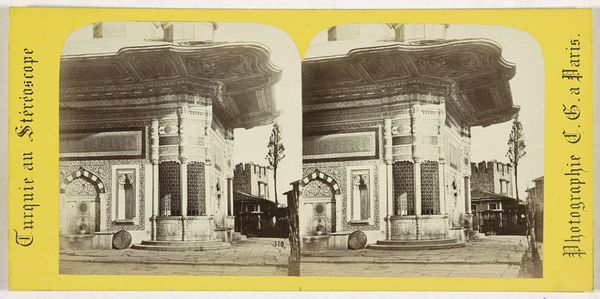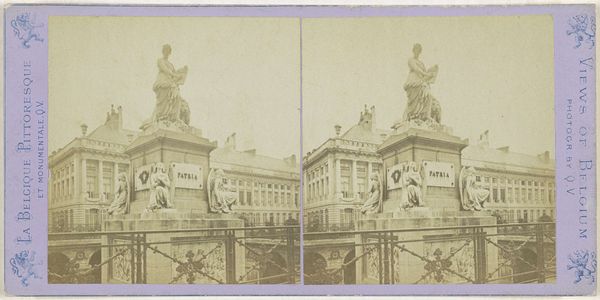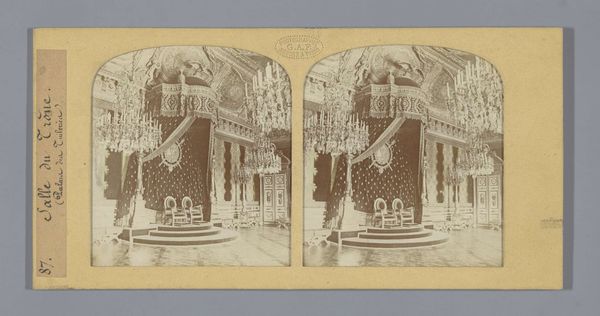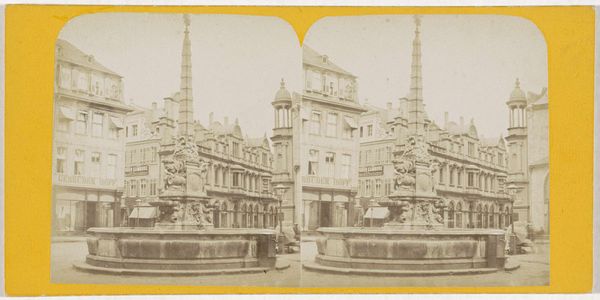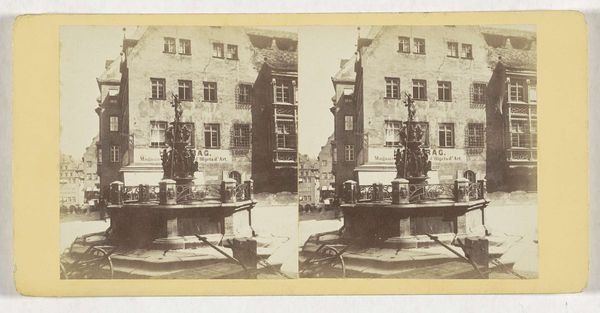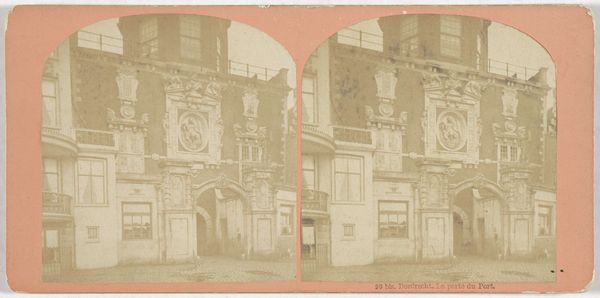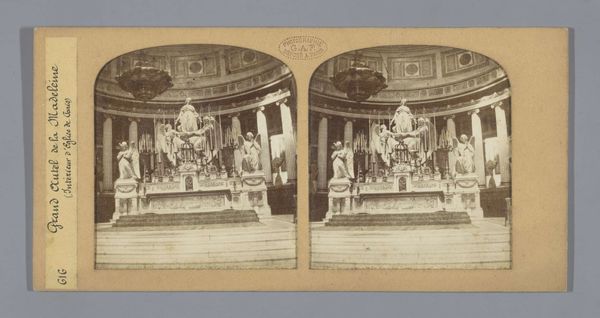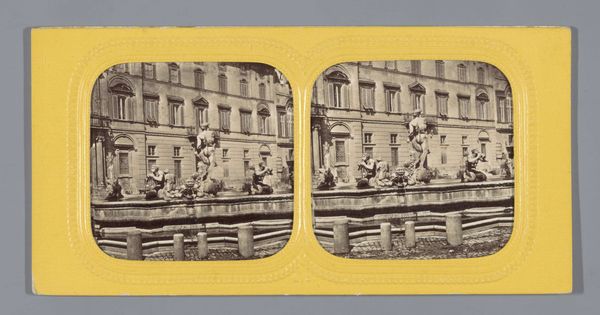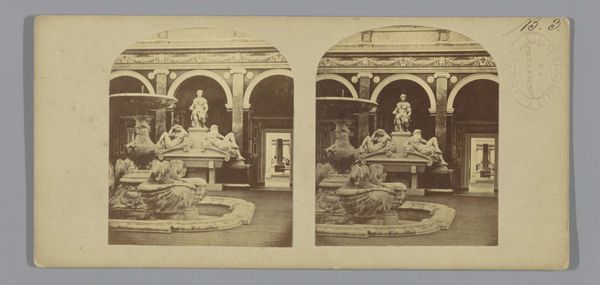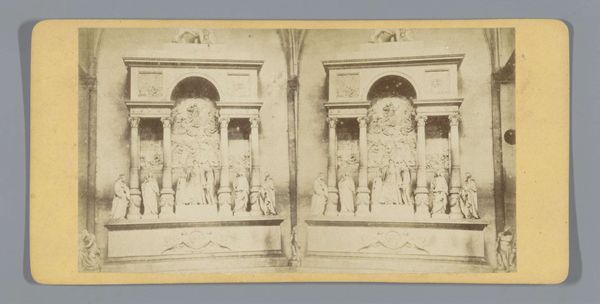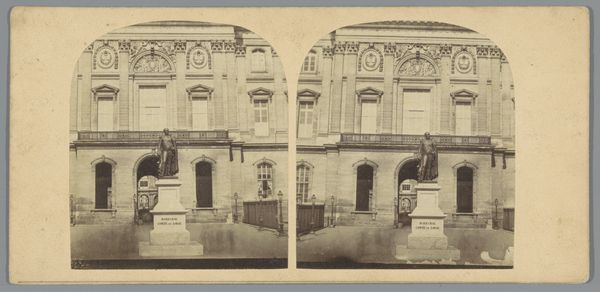
Dimensions: height 86 mm, width 174 mm
Copyright: Rijks Museum: Open Domain
Curator: This photo presents a bronze statue known as "The Statue of Egmont and Horne in Brussels," dating from 1866-1870. It’s currently held here at the Rijksmuseum. The photo is attributed to Jules Hippolyte Qu\u00e9val. Editor: It’s powerful, even in this two-dimensional form. There's a definite air of civic solemnity, but almost a somber quality hangs over it, too. The choice of bronze lends a sense of gravitas. Curator: Precisely. Bronze often signifies strength and resilience but also remembrance. Given the historical context, remembering the lives and actions of Egmont and Horne holds substantial symbolic weight. Editor: Yes, you see that history etched in the posture, the almost reluctant stance. Their story—public execution for treason, rising as martyrs—infuses this photographic rendering with potent political theatre. How would such monuments affect public memory? Curator: Public monuments always shape the narrative. Here, the neo-classical style emphasizes idealised representations of virtue and sacrifice, cementing the figures in a certain historical role, in terms of Belgium national identity formation. Consider, for example, how this monument connects to earlier renderings or other artworks on Belgium martyrdom traditions. Editor: Do you feel that the neoclassical rigidity detracts from their individual personalities? Or is that blend of individual and icon inherent in this type of political art? Curator: I’d argue it's precisely that blend. While there’s attention to realistic details, these serve a greater allegorical purpose. Consider how the statue positions itself, within its spatial surrounding. I do feel there's some tension, as in a certain psychological reading one wonders: where are these men looking towards? Where are they situated? Editor: Ultimately, even captured through this photographic lens, the statue serves its purpose: keeping their story alive. A symbol of defiance against oppression that has resonated through time and medium. I find this portrait telling of power in public memory. Curator: I agree. This image resonates profoundly, a confluence of art and history captured in a single, powerful frame.
Comments
No comments
Be the first to comment and join the conversation on the ultimate creative platform.

